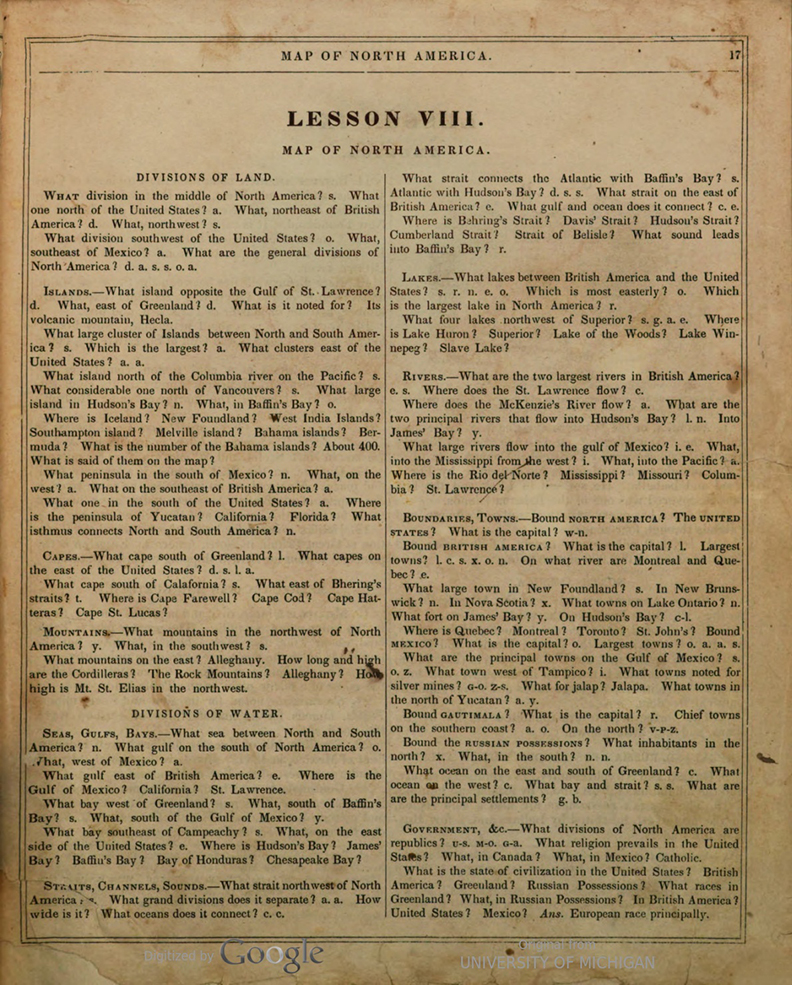Teach This Poem is a weekly series featuring a poem from our online poetry collection, accompanied by interdisciplinary resources and activities designed to help K-12 teachers quickly and easily bring poetry into the classroom.
The following activities and questions are designed to help your students use their noticing skills to move through the poem and develop their thinking about its meaning with confidence, using what they’ve noticed as evidence for their interpretations. Read more about the framework upon which these activities are based.
- Warm-up (whip around): Why do we use maps? What maps do you use? Why?
- Before Reading the Poem (noticing and pair share): Look carefully at the image of the map of North America. What do you notice? Why might this map have been created? Who might the audience be? Now, look at the second image, of the accompanying Lesson VIII: Map of North America. What do you notice about this image? How does it compare to the map? What do you wonder about these images?
- Reading the Poem: Read the poem “Lesson VIII: Map of North America” by Elizabeth Bradfield silently. What do you notice about the poem? Annotate for any words or phrases that stand out to you or any questions you might have.
- Listening to the Poem (enlist two volunteers to read the poem aloud): Listen as the poem is read aloud twice, and write down any additional words and phrases that stand out to you. Call back the lines that you like by saying these lines aloud with a partner.
- Small-group Discussion: Share what you noticed in the poem with your partner and another pair of students. Based on the details you just shared with your small group, how might the images from the beginning of class relate to the poem? Why?
- Whole-class Discussion: (Teachers, share that this poem is an erasure poem, which means that the poet removed certain words and phrases but left the structure of the original text intact.) What do you think is the significance of the lines “Boundaries Bound United Bound / the New ? Bound possessions?” How does what you have just learned about erasure poetry affect or not affect the way that you read this poem?
- Extension for Grades 7-8: Choose another of Elizabeth Bradfield’s poems to read. Write an essay that compares and contrasts the chosen poem with “Lesson VIII: Map of North America.” Be sure to explore structure and theme.
- Extension for Grades 9-12: With your partner, read Yesenia Montilla’s poem “Maps” here. Then, discuss how these poems might become visual maps. Create a map for each poem. What would be represented in each map? What would be left out? Why? Present your maps to your class.
More Context for Teachers
Take a look at Emerge, an online tool that enables students to make, save, and send erasure poems by selecting words to surface from a source text. This tool is presented in partnership with the Wick Poetry Center at Kent State University and features source texts related to democracy.


